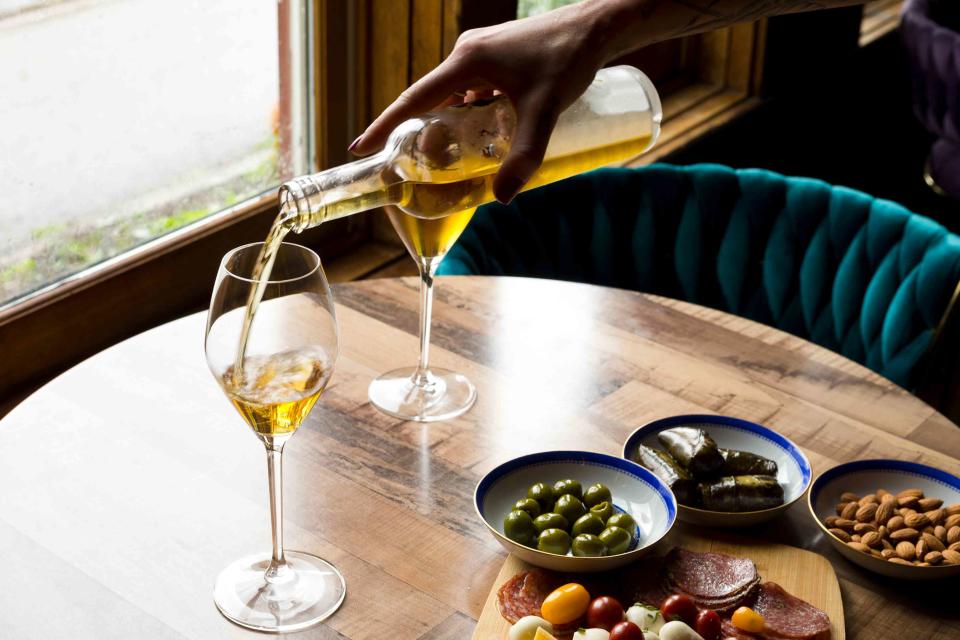If You Don't Like Sweet Wine, You Probably Haven't Had Sauternes
This iconic white wine from Bordeaux is surprisingly versatile.

Getty Images
While dry wines play marquis roles in the Loire Valley, Burgundy, and Rias Baixas, yet the most famous wines from Sauternes, in Bordeaux, are sweet. Among collectors, the top estates in the region can command impressively high prices, especially for older vintages. A quick search online reveals many very old bottles of Château d’Yquem — the benchmark estate for Sauternes, the only one to be ranked Premier Cru Superieur in the famous 1855 classification, and a favorite, famously, of Thomas Jefferson — for sale, some of them going back to the first half of the 20th century, for hundreds or even thousands of dollars. At auction, bottles from the 1800s occasionally come up for sale.
So what is it about this region and the wines that are produced there that makes it so special? Read on to learn everything you need to know about wines from Sauternes.
Where is Sauternes?
Sauternes is located towards the southeast of Bordeaux, in the Graves section. It’s comprised of five individual communes; Barsac is the most famous, and the only one whose wines have the legal right to specify that they’ve been produced there on the label. The other communes are Sauternes, Fargues, Bomme, and Preignac, but the wines produced in those four are labeled as Sauternes, not as having come from their individual communes.
Related: 30 Bottles from Bordeaux You Should Buy Right Now
How is Sauternes wine made?
Bordeaux as a whole may be best known for its age-worthy red wines, but Sauternes is the epicenter of the region’s sweet white wine production.
Because of the location of Sauternes, its vineyards — which produce mostly Sauvignon Blanc and Semillon, with Muscadelle as well — are often infected with a fungus called Botrytis cinerea, known more commonly as Noble Rot. This fungus has two distinct impacts on the berries: It partially dehydrates them, and it changes the flavors that are present when the grapes are pressed and fermented.
What does Sauternes wine taste like?
The taste of Sauvignon Blanc and Semillon may be familiar, but they undergo a distinct change in flavor and aroma when infected with Noble Rot. The best wines made with these grapes are sweet with balancing acidity, alongside flavors of honey, stone fruit (think peaches, apricots, and nectarines), flowers like citrus blossom or honeysuckle, and often feature a nuttiness on the praline, almond, or walnut end of the spectrum. Notes of tropical fruit, apples, and sweet spices may also be found.
Yet given the age-enhancing presence of residual sugar and acidity (acid is crucial for keeping all wines, but especially sweet ones, from becoming cloying), the best wines of Sauternes can age for many decades if stored properly. Mature bottles tend to take on even greater savoriness — though without losing their ambrosial sweetness — with notes of mushrooms commonly referenced.
Related: How to Find the Best Wines From the Loire Valley
What dishes pair best with Sauternes wine?
Sauternes tends to pair well with savory dishes like foie gras, as the acidity of the wine cuts through the richness of the liver, and the sweetness works as a brilliant counterpoint, while not being overwhelmed by any traditionally fruit-based accompaniments like apple or berry compote. Sauternes also works well with cheese — sipped with a great Roquefort, it’s delicious.
Do you have to spend a fortune on Sauternes wine?
Not at all! A bottle of Château d’Yquem will certainly set you back a serious amount of money — it is, in fairness, a transcendently wonderful experience — but there are plenty of fantastic ones that are surprisingly affordable. The 2018 Château Doisy-Védrines Sauternes is available for just over $30 in a 375ml half-bottle (a common format for Sauternes). It sings with honeyed apricots, candied oranges, and sweet almonds, all perking up with acidity. The 2015 Château Climens Barsac is more expensive at between $50 and $60 for a half-bottle, but it’s a cellar-worthy treat. Notes of caramelized apples, honeysuckle, and pecan pralines ring through a ginger-spiced and pie-crust-y finish.
For more Food & Wine news, make sure to sign up for our newsletter!
Read the original article on Food & Wine.

